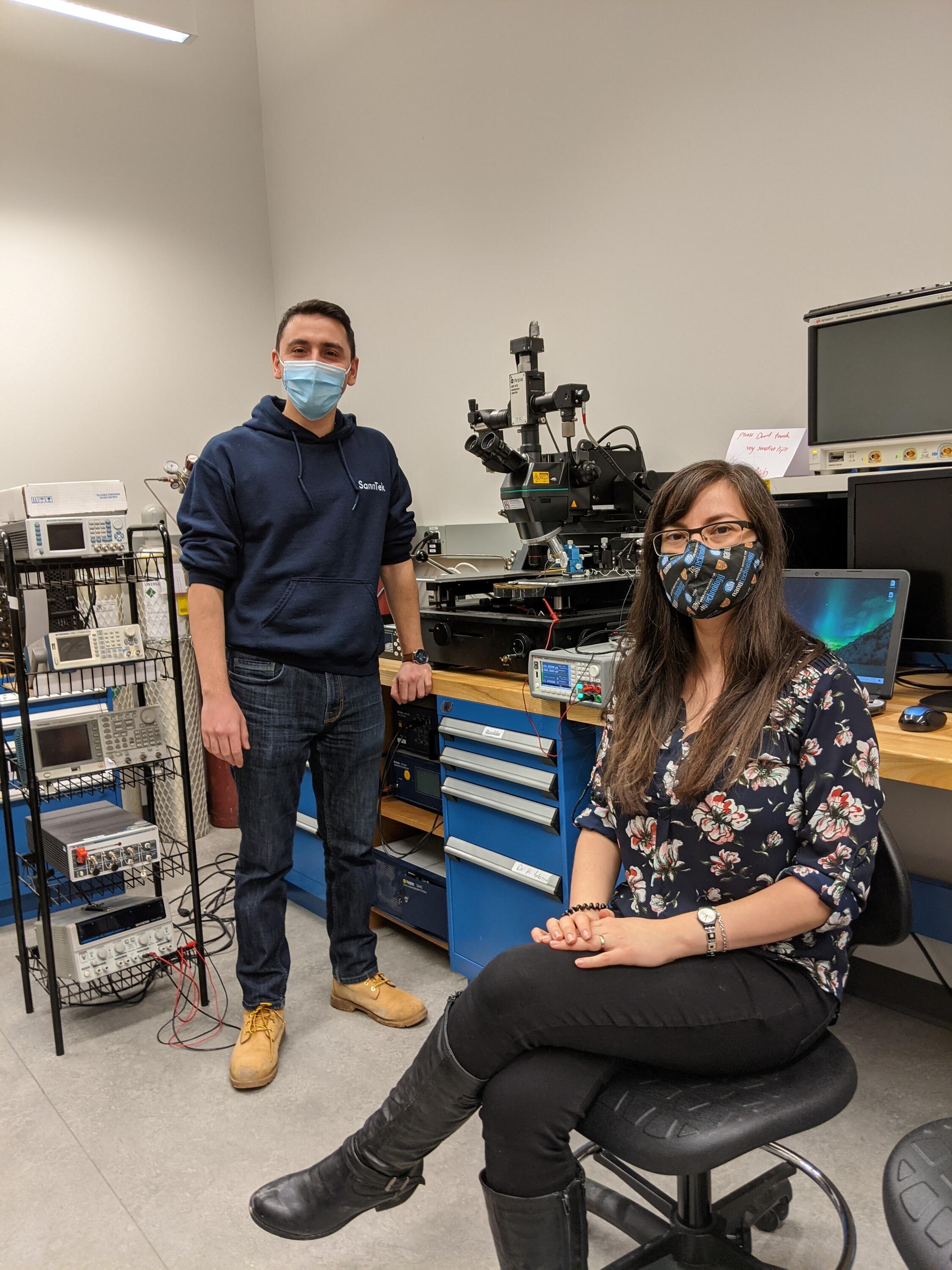The Nano and Micro Systems Lab (NMSL) mission is to conduct various researches in advanced micro and nanomechanical systems sensing and actuation technologies driven by the potential impacts on society and the environment.
The group objective is to address issues in overall NEMS and MEMS technologies advancement while contributing to fundamental sciences.
NMSL engaged in many areas of nanotechnology and microsystems, with a particular focus on devices and systems, experimentation, and fabrication.


Ongoing Research Projects
Built-In Packaging for Single Terminal Devices
In this work, we demonstrated a package-less single terminal device not requiring conventional interconnection elements and boards. Eliminating these requirements simplifies the operation of micro and nano actuators. In fact, the idea is compatible with the current sensor technology and we're working on building ultra-high-performance sensors for biomedical applications.
COVID-19 Biosensors

Researchers at the University of Waterloo have developed a COVID-19 biosensor. They are using an electronic device utilizing a graphene-based thin-film covalently functionalized with antibodies for the detection of a COVID-19 SPIKE protein. This device was demonstrated to be able to detect COVID-19 within a few minutes at ultra-low concentrations.
Paper: Electronic Detection of SARS-CoV-2 N-Protein Before the Onset of Symptoms
MEMS Deformable Mirror for Biomedical/Ophthalmology
Researchers at the University of Waterloo have developed a novel MEMS continuous deformable mirror (DM) based on resonant electrostatic actuation (REA) via single voltage waveform to vary the focus of a 1.6 mm circular DM. The DM is integrated into an adaptive optics system as varifocal mirror and able to realize an 8 cm focal shift between focal lengths of 11 cm and 19 cm by changing the phase angle between the DM drive signal and the pulse signal of the incident laser beam.

Figure: a) A microscopic picture of the DM. Schematics of b) the DM and c) fabricated device layers.
Nano-FET Resonator Project
We aim to build the world’s most sensitive and versatile sensor in practical conditions, i.e. atmospheric pressure and ambient temperature. A novel dual-sensing approach is proposed by collecting information from both mechanical and electrical domains. In the electrical domain, information will be collected with charges from the Nanostructure Field Effect Transistor (nano-FET) property and in the mechanical domain with masses from the NEMS based Resonator property of the device.

ManTech - Guelph Water Quality Sensing Partnership
Our team is excited to be working on new water sensor technologies in partnership with ManTech Inc from Guelph! We will be improving existing technologies and developing new materials for the photo-electrochemical oxidation of organics. This Photo-electrochemical Oxygen detector (PeCOD) technology will utilize thin-films, UV-excitation, and develop metamaterial solutions to improve the performance and accessibility of this critical aspect of water quality assessment.
Research Interests
- Self-powered nano and MEMS sensors and sensor nodes
- Electronic packaging and interconnectors; N/MEMS on PCBs; and Nano-/micro-joining
- Quantum electronic solids: superconductors, graphene/graphene-like materials and 2D-TDM
News
Special Issue "Materials for Nano- and Micro-Electro-Mechanical-Systems"
Special Issue "Materials for Nano- and Micro-Electro-Mechanical-Systems"




